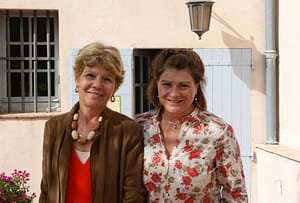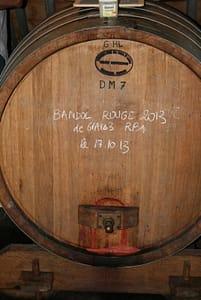Chance had it that the same vintage of Tempier that I tasted when visiting the domaine in 2013, appeared at a dinner last week. Tempier may be most famous for their stylish rosés. I am a huge fan of their reds (not to say: whites).

A little piece of history. When Lucie “Lulu” Tempier married Lucien Peyraud in 1936, her father gave them Domaine Tempier, a farm that had been in the family since 1834, just outside the Mediterranean village of Bandol. Tasting a pre-phylloxera bottle of Domaine Tempier Bandol (a wedding gift from his father-in-law) inspired Lucien to research the terroir of Bandol extensively. Up until that point, old vineyards planted with mourvèdre had been systematically replanted to higher-yielding varietals. However, more research not only showed its historical roots to the area, but the grape proved to be more resistant to oxidation, producing wines with great aging potential. By 1941, with the assistance of neighboring vignerons, Lucien worked with the I.N.A.O. (Institut National des Appellations d’Origines) to establish Bandol as its own A.O.C.
This story is told by Anthony Lynch, American importer, whose family are close friends with the people behind Tempier. Lynch calls Lucien the godfather of Bandol and the man who revived mourvèdre to its former glory. And he continues, “if any wine can be said to have soul, it’s Tempier”.

The wine comes from various sites with clay and calcareous soils. The varieties ate predominantly mourvèdre with small quantities of grapes such as grenache, cinsault and carignan. It was aged in large oak casks some 18 months before bottling.

Bandol 2011 (Domaine Tempier)
Cherry red with brick nuances. Rich nose of mature fruits (cherry, plums), herbs (cinnamon, thyme), mushroom, a touch of barnyard (maybe game). Good volume in the mouth, still plenty of fruit and some fine tannins, hints of earth and toast. Subtle and balanced, maybe at its peak now.
Price: High







